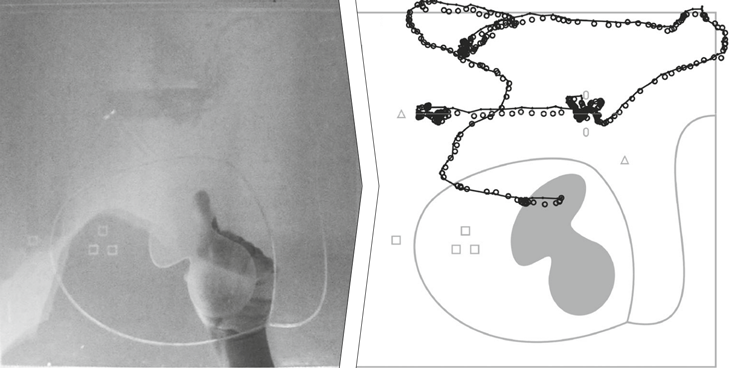Finger tracking has the potential to expand haptic research and applications, as eye tracking has done in vision research. In research applications, it is desirable to know the bias and variance associated with a finger-tracking method. However, assessing the bias and variance of a deterministic method is not straightforward. Multiple measurements of the same finger position data will not produce different results, implying zero variance. Here, we present a method of assessing deterministic finger-tracking variance and bias through comparison to a non-deterministic measure. A proof-of-concept is presented using a video-based finger-tracking algorithm developed for the specific purpose of tracking participant fingers during a psychological research study. The algorithm uses ridge detection on videos of the participant’s hand, and estimates the location of the right index fingertip. The algorithm was evaluated using data from four participants, who explored tactile maps using only their right index finger and all right-hand fingers. The algorithm identified the index fingertip in 99.78 % of one-finger video frames and 97.55 % of five-finger video frames. Although the algorithm produced slightly biased and more dispersed estimates relative to a human coder, these differences (x=0.08 cm, y=0.04 cm) and standard deviations (σ x =0.16 cm, σ y =0.21 cm) were small compared to the size of a fingertip (1.5-2.0 cm). Some example finger-tracking results are provided where corrections are made using the bias and variance estimates.
Determining the bias and variance of a deterministic finger-tracking algorithm
Behav Res Methods. 2016 Jun;48(2):772-82. doi: 10.3758/s13428-015-0610-3.
VS Morash, BHM van der Velden.
